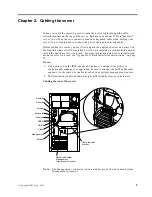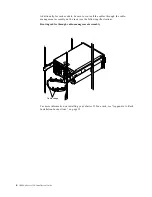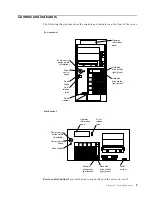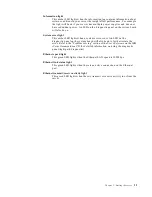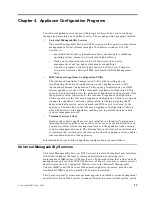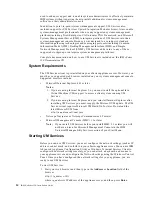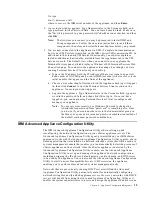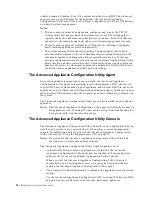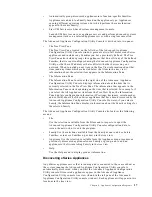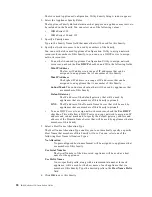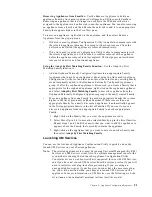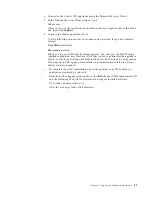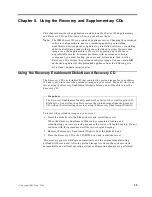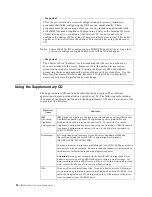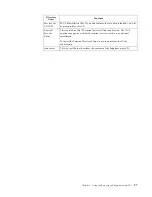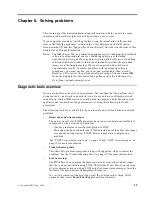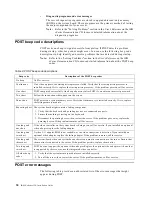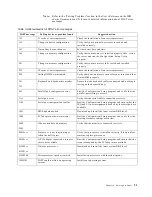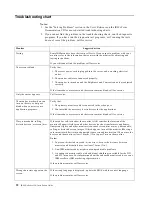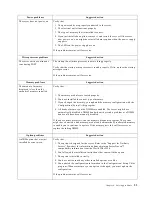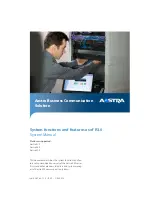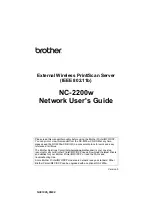
18
IBM® xSeries 150: Installation Guide
1. Every discovered appliance is listed in the tree view under All Appliances.
2. Each discovered appliance will also appear in one of the following portions of the
tree view:
•
In a Family
If the discovered appliance fits the requirements of a Family, it will
automatically appear as part of a Family.
Note:
If a discovered appliance fits the requirements of more than one
Family, it is automatically added to the first appropriate Family that
is listed in the tree view, starting from the top of the tree. For
information on how to move appliances between families, see
“Using Families and Groups in the Tree View”.
•
In the Orphaned Appliances group
If the discovered appliance does not fit a previously configured Family, it is
placed in the Orphaned Appliances group.
•
In the Orphaned Externally Configured Appliances group
Appliances that are running the Advanced Appliance Configuration Utility
agent, but that have a network configuration that was not set by the
Advanced Appliance Configuration Utility agent or console, will appear in
the Orphaned Externally Configured Appliances group. If an appliance is
contained in the Orphaned Externally Configured Appliances group you
can use the Adopt By First Matching Family function to add it to a
previously defined Family. For more information, see “Using the Adopt by
First Matching Family Function” on page 21.
Using Families and Groups in the Tree View
Families are important elements of the Advanced Appliance Configuration Utility.
They specify the parameters the Advanced Appliance Configuration Utility uses to
automatically categorize discovered appliances and to configure them with the
appropriate network settings. Family rules are defined solely by appliance type or
purpose. Each Family can contain only one type of appliance. The only way to
automatically apply predetermined network settings to newly installed and
discovered appliance servers is to create and use Families.
Appliance servers that match the rules criteria for a Family group can be
automatically configured to use predefined network settings. A Family can be
configured to allow appliances to use DHCP to configure their IP settings, or can be
defined to automatically assign IP settings (such as primary gateway and DNS server
addresses, assigning an IP address from a specified IP address range, and specifying a
subnet mask). Host names for discovered appliances can also be defined so that they
are allocated using either a Prefix or Serial Number.
The Advanced Appliance Configuration Utility is not the only way to configure
network settings. For example, network settings can be configured using Terminal
Services for Windows or by attaching a keyboard and mouse to the appliance and
using Windows Control Panel on the server. If the appliance network settings have
been configured by a method other than using the Advanced Appliance
Configuration Utility the appliance will be discovered by the Advanced Appliance
Configuration Utility and it will be added to an appropriate Family, if one exists.
Appliances that have been configured using a method other than the Advanced
Appliance Configuration Utility for which no appropriate family exists will appear in
the Orphaned Externally Configured Appliances group.
The Tree View Panel contains the following items:
•
All Appliances Every discovered appliance is listed in the tree view under All
Appliances.
Summary of Contents for eServer 150 xSeries
Page 1: ...IBM IBM xSeries 150 Installation Guide...
Page 2: ......
Page 3: ...IBM IBM xSeries 150 Installation Guide...
Page 10: ...viii IBM xSeries 150 Installation Guide...
Page 12: ...x IBM xSeries 150 Installation Guide...
Page 16: ...4 IBM xSeries 150 Installation Guide...
Page 24: ...12 IBM xSeries 150 Installation Guide...
Page 36: ...24 IBM xSeries 150 Installation Guide...
Page 40: ...28 IBM xSeries 150 Installation Guide...
Page 74: ...62 IBM xSeries 150 Installation Guide...
Page 75: ......


